It’s time to get back to basics and learn how to make old fashioned pound cake. Transform pantry staples into a dangerously delicious treat, that can be dressed up as a dessert or devoured as is with your next cup of coffee.
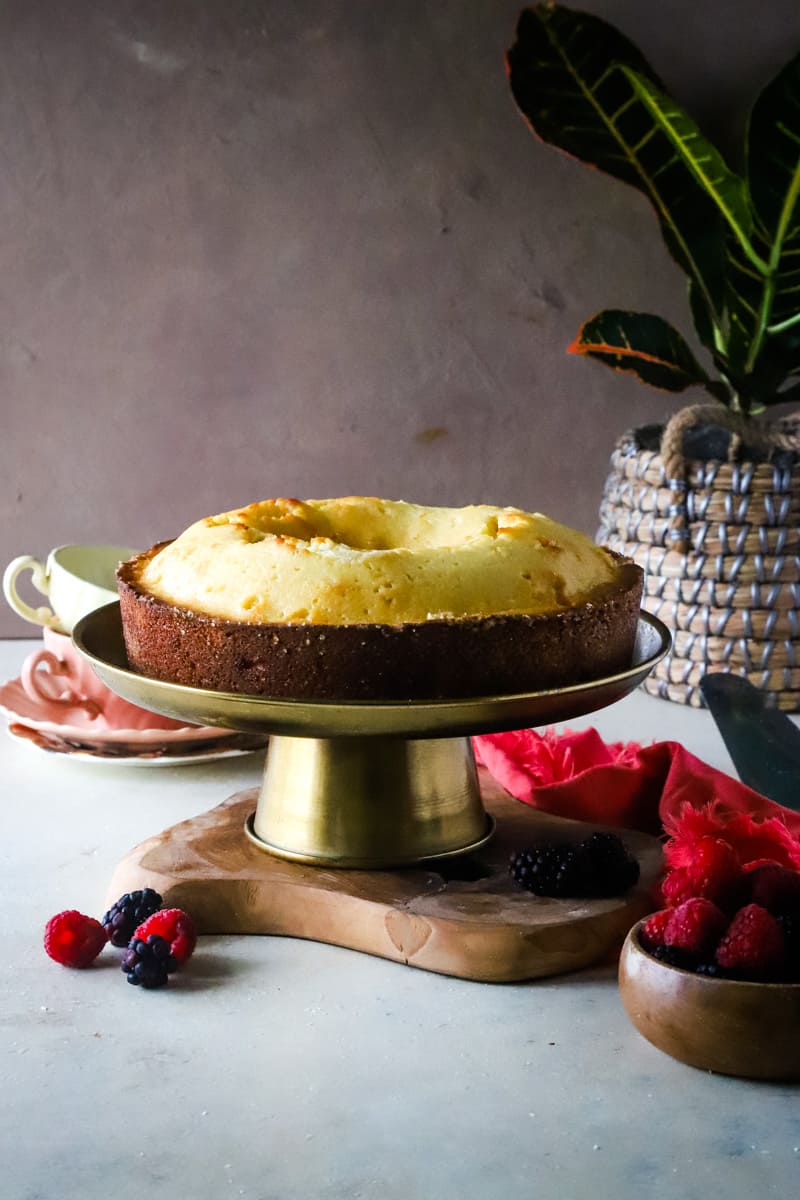
While I’m no stranger to a classic pound cake recipe, I value the importance of getting the basics right before we go wild with flavor combinations. It can be tough diving into a raspberry lemon pound cake or a lime and coconut version when we don’t have the traditional pound cake recipe nailed first.
Consider this old fashioned pound cake your blank canvas. Dense and buttery with a moist crumb, it is a delight as is, but it’s also perfect for drizzling on a fruit glaze or a generous coat of icing. It can be jazzed up for different special occasions including cranberry orange for Christmas or cute Mini Chocolate Pound Cakes for packed lunches or playtime. This classic dessert can be enjoyed all year long!
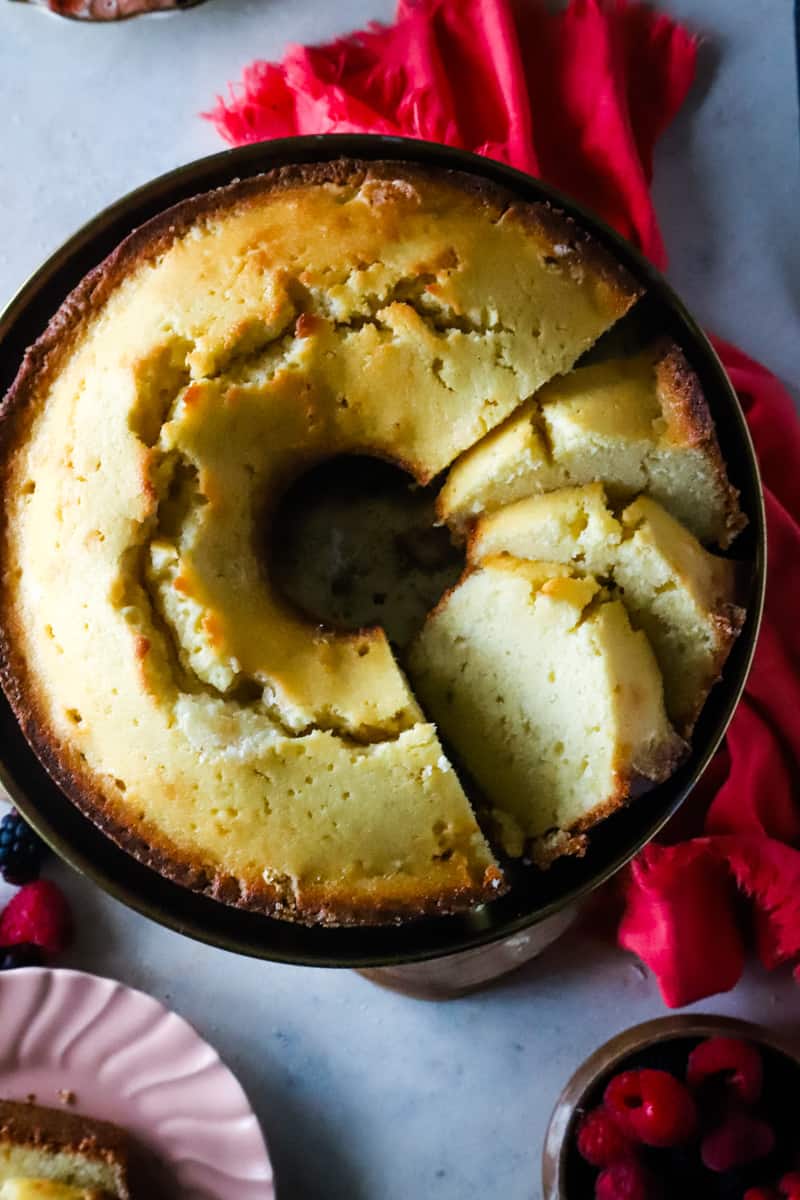
This old fashioned pound cake recipe actually dates back as far as the 1700s. The name originates from how it’s made, traditionally using one pound of sugar, butter, flour and eggs. Like most recipes, however, over time we’ve substituted, sprinkled and spiced things up which is why it’s always fun to strip things back and learn the basics of the original recipe.
With this old fashioned pound cake don’t assume basic means boring. There’s a reason this family favorite has lasted generations and we still fight over the last slice today. While I’ve kept the ingredients traditional, I've also added buttermilk for a richer depth. Vanilla and almond extract are also so a welcomed addition. You can bake it in a loaf pan or a bundt cake pan – whatever you have to hand.
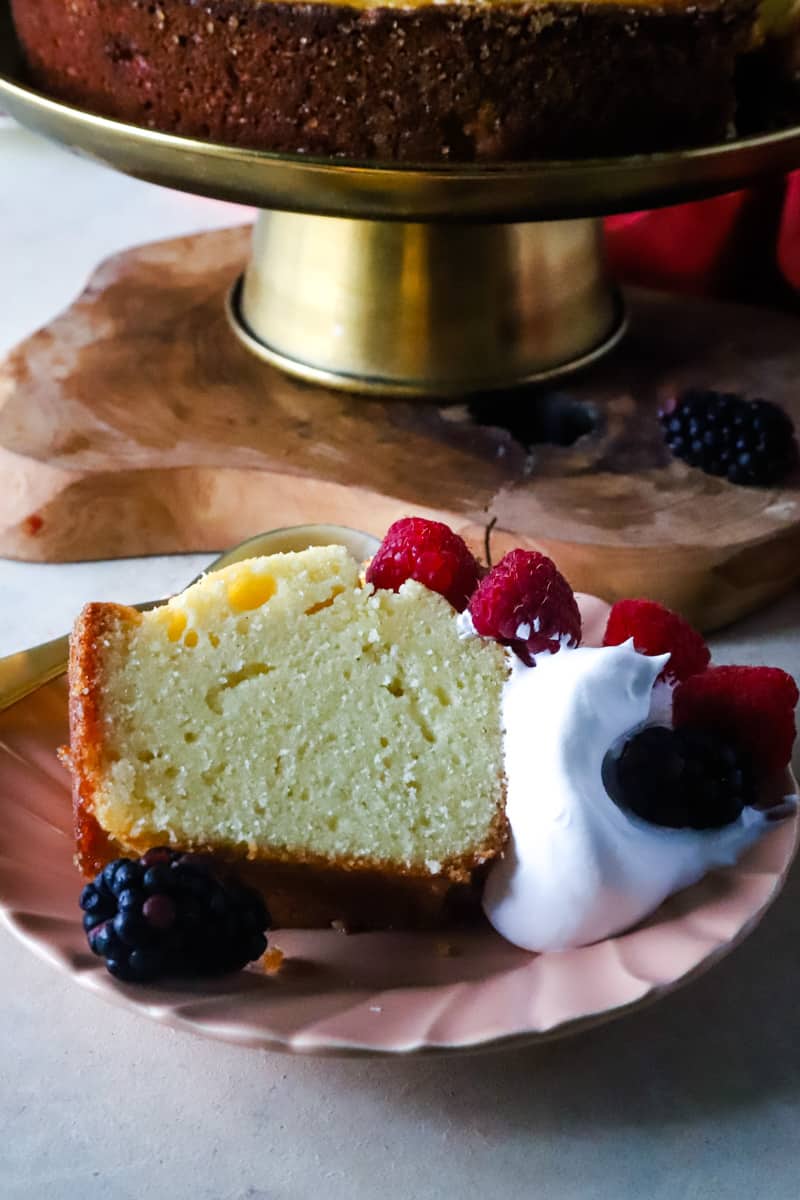
Regardless of whether you dress up your old fashioned pound cake, or leave it like mom used to make, this recipe will be one you’ll return to over and over again. Serve with a scoop of dulce de leche ice cream for a delicious dessert, a dollop of lemon curd and chopped pistachios for a Spring time treat, or peaches and cream for the ultimate breakfast.
WHY WE LOVE THIS OLD FASHIONED POUND CAKE RECIPE
- Pantry staples – Sometimes the best recipes are the most basic. Using ingredients you already have in your pantry saves you time and money without compromising on flavor!
- Customizable – Talking of pantries, feel free to throw in whatever you need to be used up from yours. Chopped dates, toasted coconut, lemon zest – the options are endless! There are so many ways to dress up your homemade pound cake or devour it warm from the oven as is.
- Easy Recipe – This is a great recipe to introduce your kids to baking because once the ingredients are measured, it’s a case of mixing them in a bowl and pouring the batter into your pan – simple! The hard part is waiting for it to bake because it smells sensational.
- Delicious – There’s a reason Old fashioned pound cake is still baked in modern kitchens. Not many recipes have survived since the 1700s but you’ll struggle to find someone who can resist its tender crumb, rich and perfectly sweet taste.
- Freezer friendly – Having cake in your freezer is like having money in the bank. It’s always handy! You never know when those cake cravings may strike, or your inlaws show up unannounced, so having a homemade treat that everyone will enjoy on hand is always welcome.
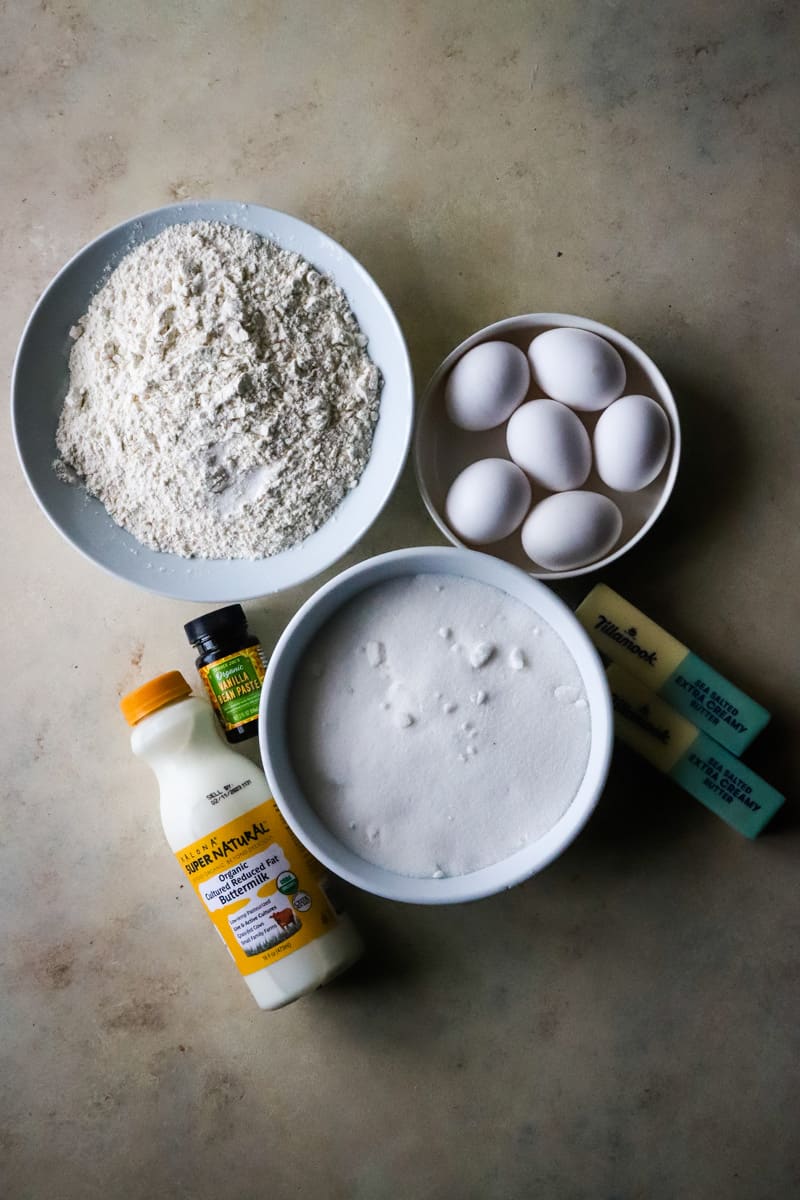
INGREDIENTS/SHOPPING LIST
- Butter or non-stick cooking spray- for the pan
- Turbinado sugar (raw sugar)- for the pan
- All-purpose flour
- Salt
- Unsalted room temperature butter
- Granulated white sugar
- Large eggs
- Vanilla extract
- Buttermilk
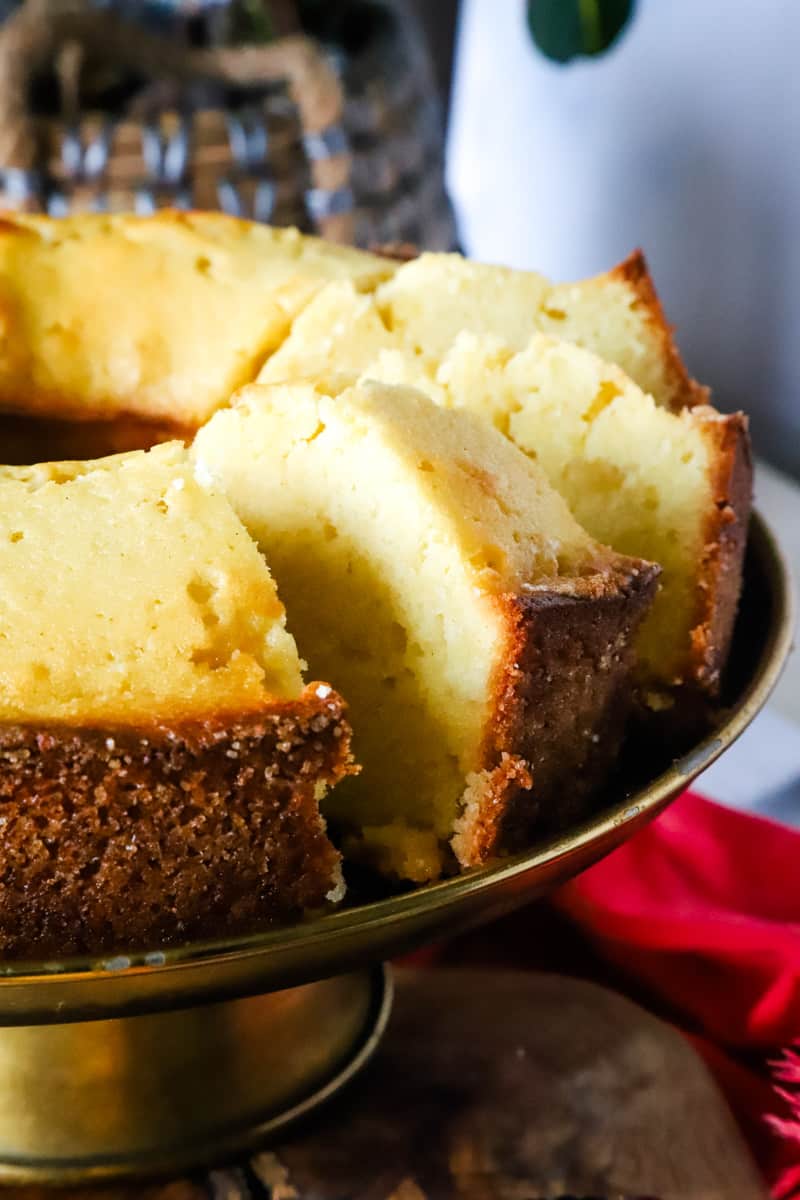
SUBSTITUTIONS AND ADDITIONS
- Butter - Instead of butter you can use ricotta, sour cream, Greek yogurt or mascarpone. It’s fun to experiment as each one will bring a different flavor and texture. For example, sour cream or mascarpone will create a dense and rich pound cake however ricotta or yogurt will make it lighter and a little more dry and not have a buttery flavor. Or, make a cream cheese pound cake by substituting half of the butter for equal amounts of room temperature cream cheese.
- Sugar - Feel free to experiment with the type of sugar you use. The results will vary but all will be delicious whether you use regular white granulated sugar, raw cane sugar or even muscovado. You can also add honey to replace some of the sugar but note it tends to caramelize while baking so the pound cake will darken faster.
- Eggs - Eggs vary in weight so you may need to add extra depending on the size of your eggs. Generally, large eggs weigh around 2 ounces each. This means it takes between 8 and 9 large eggs to equal one pound.
- Vanilla Extract or Almond Extract - Both are excellent additions that add extra depth of flavor. You can either add two teaspoons of extract to the batter. Or, mix 2 tablespoons of water with 1 teaspoon extract and drizzle over the cake when warm out the oven.
- Flour- If you are looking for a lighter less dense cake, use cake flour.
- Zest - Lemon or orange zest is also a great addition to this old fashioned pound cake recipe. It will add a little citrus edge, without overpowering the traditional flavor.
- Chocolate - Chocolate is always a welcome addition to any cake. Replace about ¼ cup of the all purpose flour with Cocoa powder. Note, cocoa tends to dry the batter, so you may need to rebalance the quantity of the other ingredients.
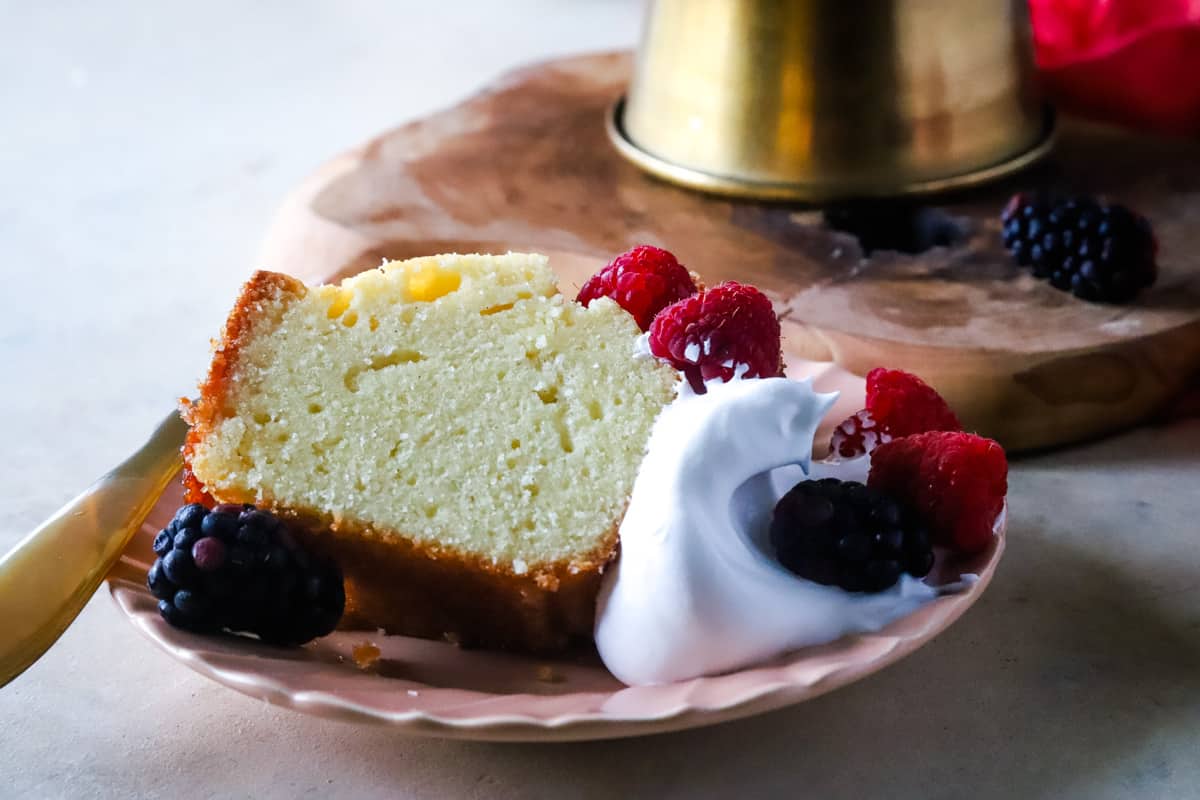
RECOMMENDED TOOLS TO MAKE THIS RECIPE
- Tube pan/Bundt Pan
- Measuring cups & spoons
- Wooden spoon/spatula
- Mixing bowl
- Wire rack
HOW TO MAKE THIS OLD-FASHIONED BUTTER POUND CAKE RECIPE
The simplicity of this pound cake recipe is what makes it so special. Minimal ingredients that pack maximum flavor, it's traditional baking at its best. Once you cream your butter and sugar, slowly add your eggs for a batter that will bake beautifully. Slice and serve with your favorite toppings or get inspired from my list below.
Step 1- Preheat the oven to 350 degrees. Grease tube pan then generously sprinkle with the turbinado sugar. PRO TIP: It is important you do both to make removing the cake from the pan easy. If you don’t have this sugar, use flour.
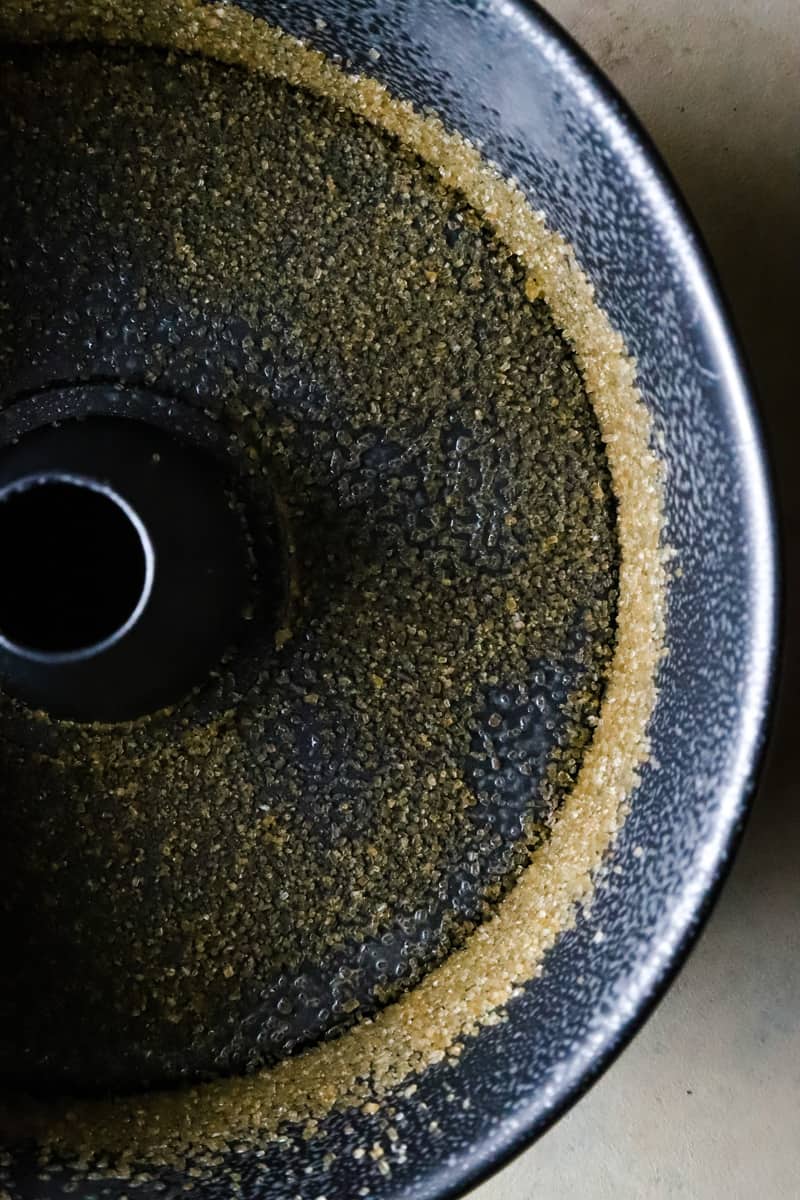
Step 2- Sift flour in large bowl; set aside. Cream the butter and sugar. The mixture should be light in color, like a pale yellow.
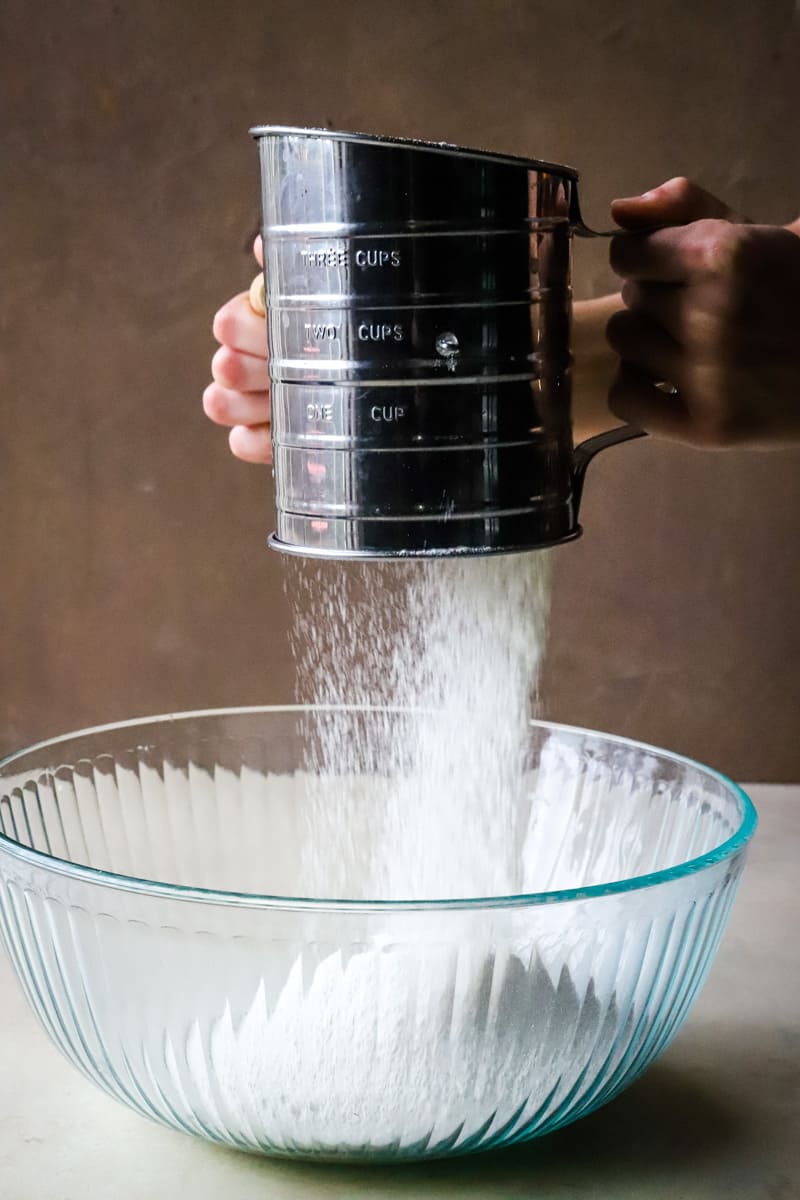
Step 3- Add the eggs one at a time. Continue to mix until the egg disappears completely into the mixture. PRO TIP: It is important to beat thoroughly between the addition of each egg, making sure that the batter gets enough air beat into it as this is what makes the cake rise. The egg needs to be well incorporated before adding more. Stir in vanilla extract.
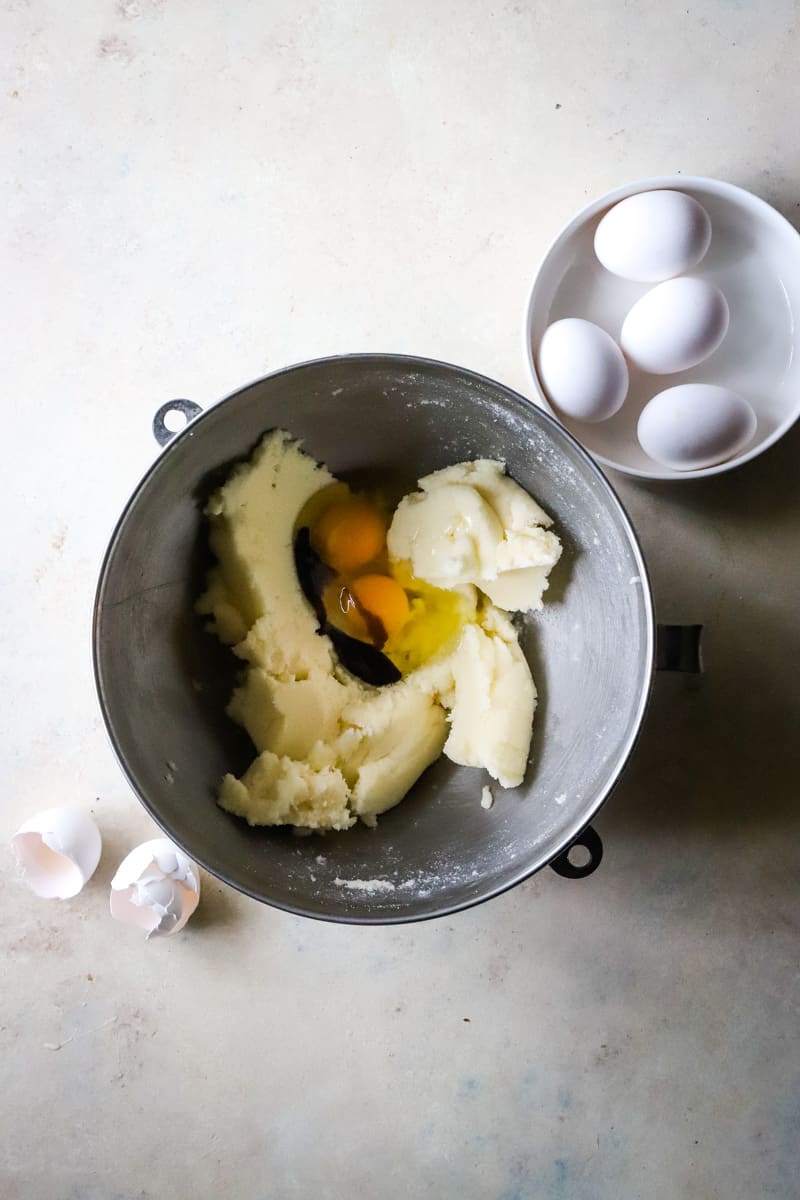
Step 4- Slowly incorporate the flour into the mixture one 1 cup at a time, alternating with adding the buttermilk. Mix until flour is incorporated PRO TIP: Overbeating the batter once your flour is added will result in a tough cake. Stir until combined but not for much longer.
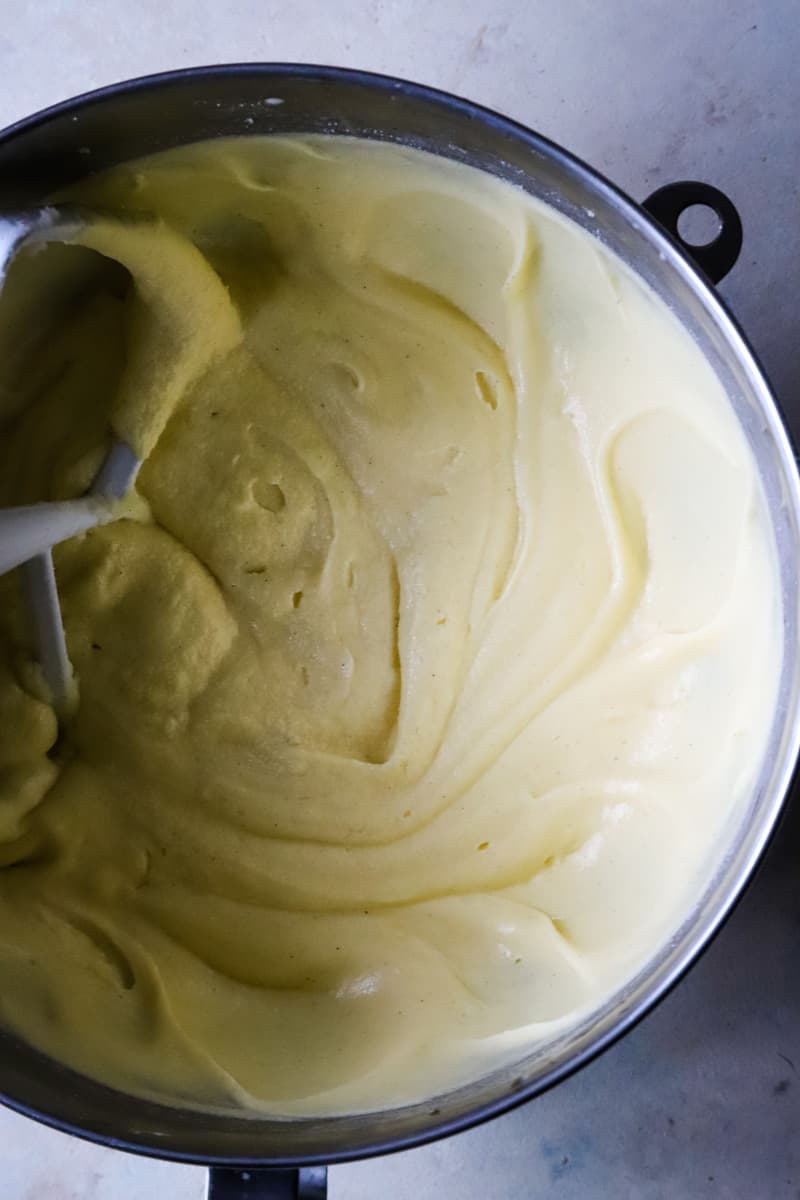
Step 5- Bake for 60 minutes or until a toothpick is inserted into the center of the cake and comes out clean. PRO TIP: DO not be tempted to open the oven door until 60 minutes have passed. This will risk your pound cake sinking. Allow to cool in the pan 10-15 minutes. Remove from pan to a wire rack and let cool completely.
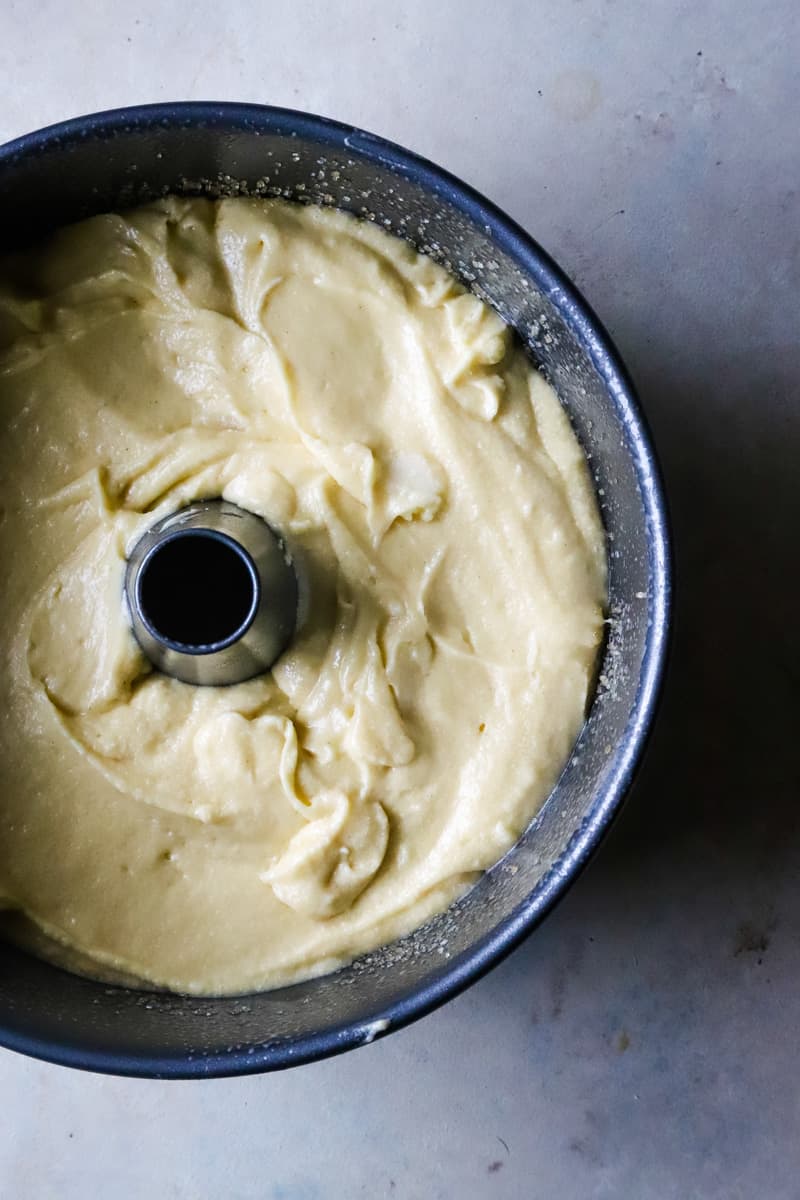
TIPS
- Prepare your pan – This is usually the number one mistake when making an old fashioned pound cake. Failing to prepare is preparing to fail! Always grease your cake pan and use a dusting of flour. Coating the greased pan with a thin dusting of flour creates a barrier between the grease and the cake batter. This prevents the grease from melting into your cake, ready for a smooth removal once baked.
- Room temperature - For best results, make sure your butter and eggs are at room temperature. This way they will incorporate more air for a more desirable texture once baked. Room temperature eggs also blend into the batter more easily and as the only leavening agent used, it’s important they incorporate well for your pound cake to rise.
- Measure the flour – To prevent a dry pound cake, it is essential you measure the flour correctly. The easiest way to do this is to spoon the flour into your measuring cup. Do not use the measuring cup to scoop the flour. Then, level the flour using a knife.
- Avoid overbeating – No one wants a tough cake, so try not to overbeat. Overbeating the butter will make it greasy not creamy. This ruins the butter ability to trap those glorious air bubbles. The same goes for flour. Once the flour is added, beating is essential to promote gluten forming. Too much beating will make a tough cake!
- Beautiful batter – Your cake batter should be a pale, yellow emulsion. When done correctly, it will trap air bubbles for a perfect rise and fluffy texture. If you over or under mix, your batter may look grainy, pale or curdled.
- Resist temptation – it can be torture trying to resist the smell of freshly baked cake but I implore you not to open the oven door a moment to soon. Keep your cake in the center of the oven and the door closed until the minimum bake time at least. If you open it (even for a sneak peak) too early, this can risk your cake sinking. If you need to test doneness, do it as quickly as possible to prevent any heat loss.
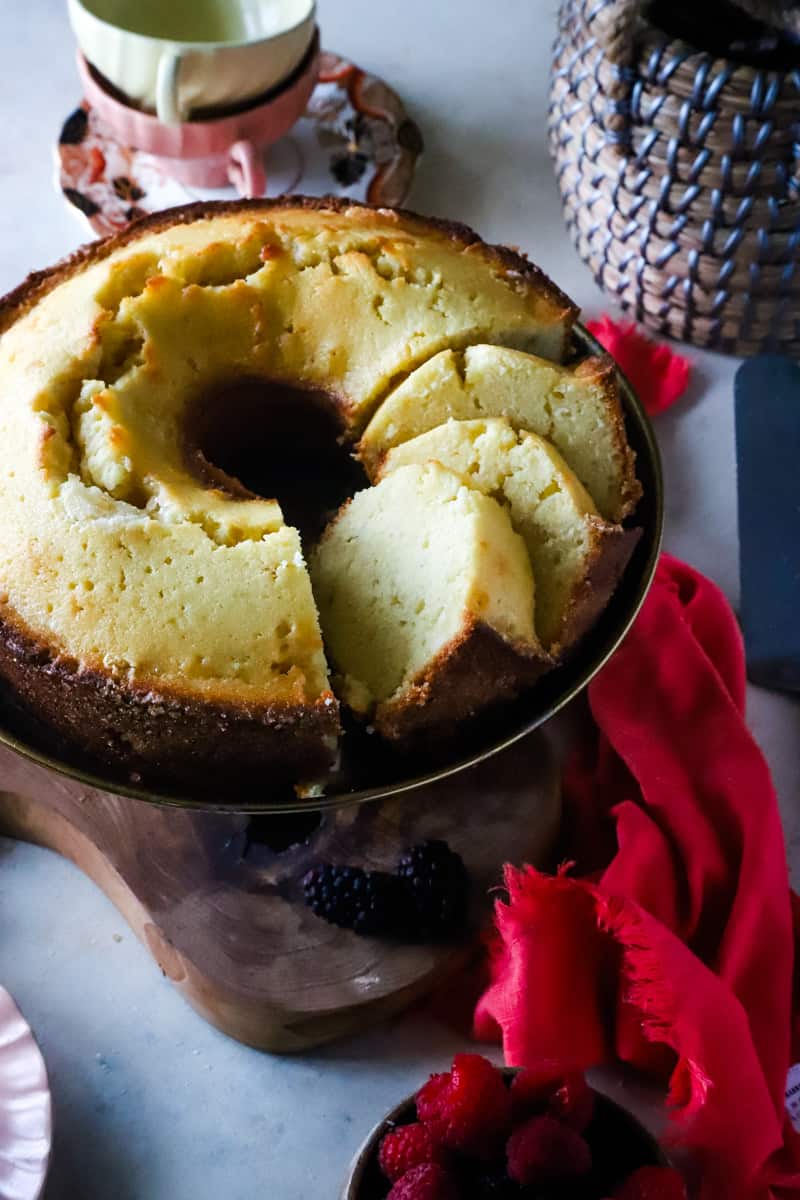
STORAGE TIPS
- I often find old fashioned pound cake tastes better the next day. If you have the patience to wait, store it in an airtight container at room temperature.
- Wait until the cake is fully cooled before adding to the container otherwise condensation will form.
- It will stay good stored on the counter for up to 5 days. Avoid storing in the refrigerator as this can alter the texture and taste.
- To freeze pound cake, wait until it is cooled completely then wrap in freezer friendly aluminum foil or plastic wrapping. The cake can be stored in the freezer between 2-4 months (don’t forget to date it!) but the texture and taste will deteriorate over time.
- To defrost, place on a wire and allow to come to room temperature. You can also thaw in the refrigerator but this may risk your cake going mushy. Make sure to use it as soon as it is defrosted to avoid the pound cake going stale.

FREQUENTLY ASKED QUESTIONS
How is a pound cake different from sponge cake?
Although considered cake cousins due to similar ingredients, there are a few differences in texture and taste between old fashioned pound cake and the typical American-style sponge cake. These include:
- Density - A pound cake is particularly dense so won’t rise as much as a typical sponge cake. As the majority of sponge cake recipes are made by separating the eggs and whipping the egg whites, you can expect a lighter, “spongier” texture than you would from pound cake.
- Rich flavors – Due to the richness, pound cakes are usually served plain or topped with a basic glaze instead of a thick frosting.
- Pan – Instead of a round cake pan, old fashioned pound cake is usually baked in a loaf or bundt pan.
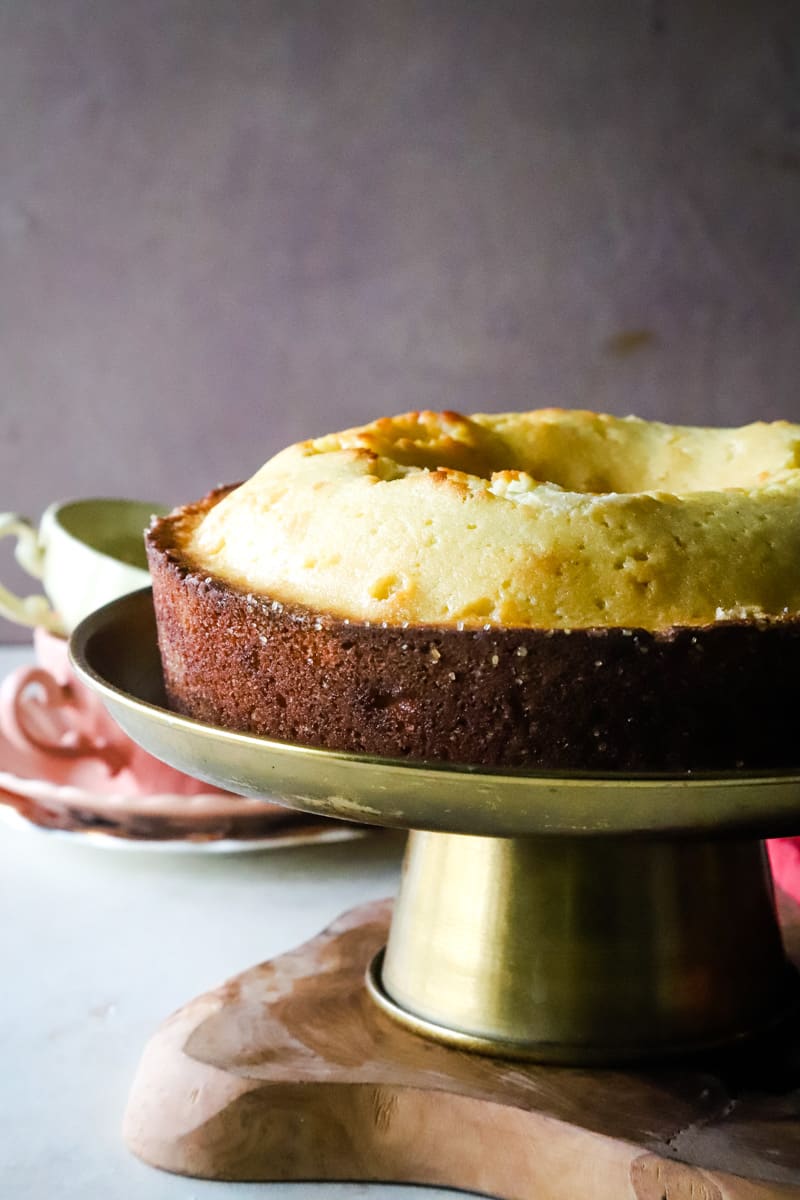
What is the best pan for an old fashioned pound cake?
For best results, use a loaf or tube pan for your old fashioned pound cake. I used a tube pan which can be any type of round baking pan that has a hole in the center.
A bundt pan is a style of tube pan that due to its shape allows large, deep cakes to bake faster. The hole in the middle also allows air to transfer through the batter which aids the cakes rise, even at a lower temperature.
A loaf pan on the other hand has a much lower capacity so you may need to adjust the ingredients or bake two loaves. It is a rectangular shape with deep walls which means it can withstand higher temperatures but the cake may take a little longer to bake than if using a tube pan.
I find a tube pan creates an aesthetically pleasing pound cake, but it can be trickier to remove your cake from a tube pan than a loaf pan, so whatever your preference.
As a final tip, make sure to use a light colored pan. Dark-colored pans absorb heat more efficiently than light-colored pans. This means the sides and bottom of your cake may cook and brown more quickly, so stick with light for best results.
How to avoid pound cake sticking to the pan?
As mentioned, I find this the hardest part of the old fashioned pound cake recipe. You can buy the best ingredients, create the most beautiful batter and bake it to perfection only for your hard work to be ruined as your cake sticks to the pan. We’ve all been through the soul destroying moment of half your cake clinging to the pan, so here’s my best tips to avoid it:
- Grease & flour – grease your pan and lightly dust with flour or raw sugar to create a barrier between cake pan and batter.
- Cool correctly – allow your cake to cool in the pan (right side up) for around 10-15 minutes before you attempt to remove it.
- Warm but not hot – If your cake is still hot after 15 minutes wait a little longer. It should be warm but not hot. If you wait too long however, this will cause condensation, making your cake damp and encouraging it to stick. Once removed, sit on a wire rack to cool fully.
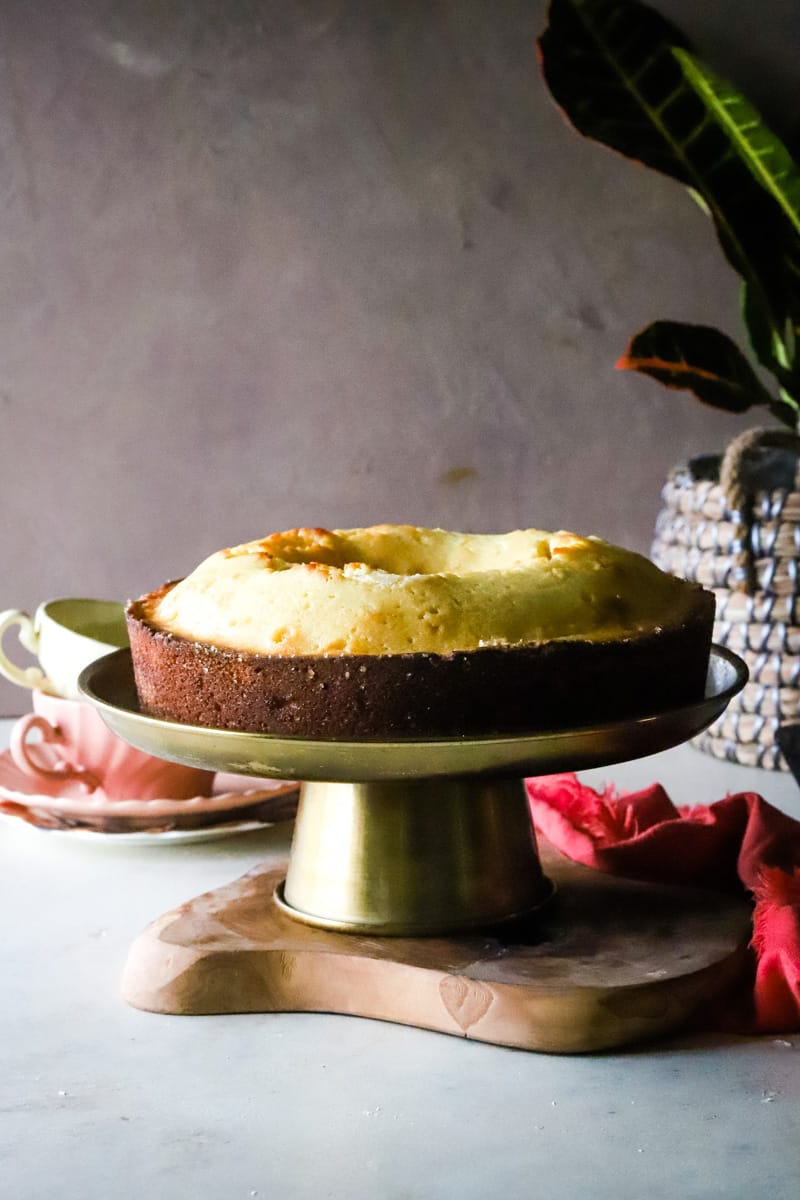
Best ways to serve old fashioned pound cake
Old fashioned pound cake is a wonderful recipe because you can dress it up differently each time you serve it or enjoy it as is. Here are a few ways to serve pound cake that I’m sure the whole family will love:
- A dollop of lemon curd & chopped pistachios
- Greek yogurt & a drizzle of honey and chopped fresh fruit
- Sliced bananas, toasted coconut & Nutella
- Mascarpone, toasted pecans & lemon zest
- Fresh strawberries & whipped cream for a strawberry shortcake
- Chopped peaches & cream
- Fresh blueberries & lemon zest
- A scoop of vanilla ice cream & a drizzle of caramel sauce
MORE CAKE RECIPES YOU MAY ENJOY
- Upside down pineapple bundt cake
- Sweet potato layer cake
- Zucchini Crumb Bundt cake
- Coconut cake with mango curd filling
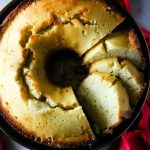
- Butter or non-stick cooking spray
- 2 tablespoons turbinado sugar raw
- 3 cups all purpose flour
- 1 teaspoon salt
- ½ pound butter
- 2 ½ cups granulated white sugar
- 6 large eggs
- 2 teaspoons vanilla
- 1 cup buttermilk room temperature
-
Preheat the oven to 350 degrees.
-
Grease tube pan then generously sprinkle with the turbinado sugar. It is important you do both to make removing the cake from the pan easy. If you don’t have this sugar, use flour.
-
Cream the butter and sugar. The mixture should be light in color, like a pale yellow.
-
Add the eggs one at a time. Continue to mix until the egg disappears completely into the mixture.
-
Stir in vanilla extract.
-
Slowly incorporate the flour into the mixture one 1 cup at a time, alternating with adding the buttermilk. Mix until flour is incorporated.
-
Bake for 60 minutes or until an inserted toothpick comes out clean. Do not be tempted to open the oven door until 60 minutes have passed. This will risk your pound cake sinking.
-
Allow to cool in the pan 10-15 minutes. Remove from pan to a wire rack and let cool completely.

Leave a Reply